
Everyone has to start somewhere, and for Aimpoint, it was with the Electronic. This was Aimpoint’s first optic, and the first Light Emitting Diode (LED) red dot optic to hit the commercial market. How does the first red dot stack up?
What is the Background of the Aimpoint Electronic Red Dot?
To talk about the original Aimpoint optic requires talking about the early days of Aimpoint.
Aimpoint AB was formed in 1974, in Malmö, Sweden, however their first product would not be released until 1975. The Aimpoint Electronic was the first product released by Aimpoint, and the first commercially sold red dot optic. Although it wasn’t the first produced red dot reflex sight, it was the first to use an LED to emit the dot.
The optic works in a simple manner; a light is projected from the emitter, onto a piece of curved glass. This allows the dot to be seen by the shooter, and used for accurate fire. Although this is a familiar concept to us in the 21st century, it was revolutionary in the 1970’s. This is not an article about why red dots are great for accurate, rapid fire, but this was the optic that got that ball rolling. This is the grandpappy of every modern red dot on the market.
The Electronic released and was a success among hunters, and got the ball rolling for further LED optics to be developed by Aimpoint. The Electronic had three distinct generations, designated by the Electronic, Electronic G2, and Electronic Mark III.
Differences Among Generations of the Aimpoint Electronic
At the baseline, all three generations of the Electronic are LED reflex red dot sights. However, each iteration of the Electronic brought the optic closer to what we are familiar with today.
THE ELECTRONIC G1
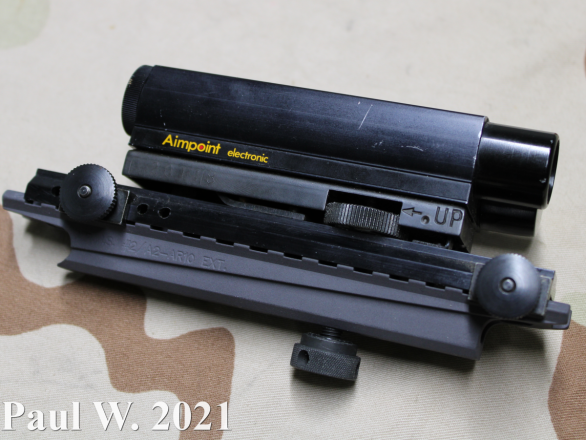
The original Electronic was certainly the weirdest, most alien out of the bunch. It hit the market in 1975, and was produced until 1979. It featured external windage and elevation adjustments, mounted on the base of the optic. While not unusual at the time, this is pretty unique these days. Zeroing the Electronic is something akin to zeroing an artillery gun.
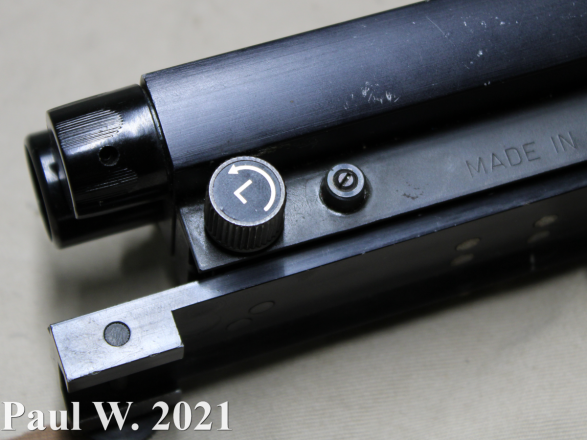
The objective window of the optic is 14mm, which is quite small by modern standards. Still usable, but very tight.
For battery selection, I have seen the RM1N recommended by Aimpoint. I’ve yet to get my hands on one of them, but will update once I get this Electronic functioning again. Information is sparse on the original Aimpoint, but that hasn’t stopped me from digging about it. Hell, even Aimpoint has the wrong user manual listed on their site for the optic.

THE ELECTRONIC G2
The Electronic G2 was the generation 2 Aimpoint, released in 1978. While an evolution of the Electronic, the G2 retained many of the elements of its predecessor. The major difference between the Electronic and G2 is size; the G2 is considerably smaller than the Electronic. Featuring a smaller profile mount and optic body, the G2 is more svelte than the Electronic, but is still quite big by modern standards.
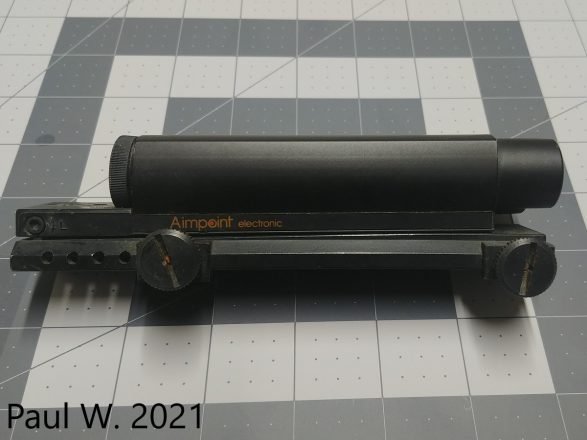
The external adjustments of the Electronic are retained in the G2, but in a lower profile manner.

Like the Electronic, the G2 is essentially an optic placed on a platform, which is then mounted to the gun. The mount uses a Weaver rail clamp, but can fit on certain 1913 rails, with some gentle persuasion. The rail clamp at the back of the optic is fixed, but the forward clamp can be moved around for fitment on certain optic rails.

Window size is still very small (14mm window) on the G2, and battery life is anemic. I’ve gotten about 40-50 hours of runtime out of my G2, however the optic was not designed to be left on all of the time. While this is quite poor by modern standards, the novelty of the optic more than made up for the battery life. The G2 can function with a range of batteries, but I use CR2s with a spacer inside of the battery compartment.
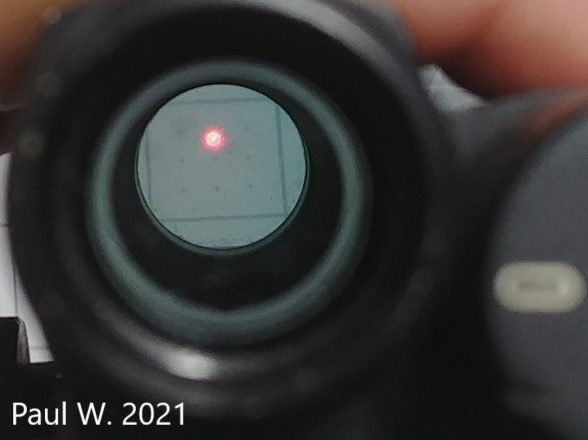
The G2 was able to mount a three power magnifier, which threaded on to the body of the optic. It is a pretty neat accessory to a pretty neat optic.
The G2 ended production in 1984, but it’s lineage was passed on to the Mark III.
THE ELECTRONIC MARK III
The Aimpoint Electronic Mark III was launched in 1983, and soon replaced the G2. The major change from G2 to Mark III was a biggie; the separate mount was nixed, and all of the adjustment controls were moved on to the optic itself. Otherwise, the optic is functionally the same as the G2.
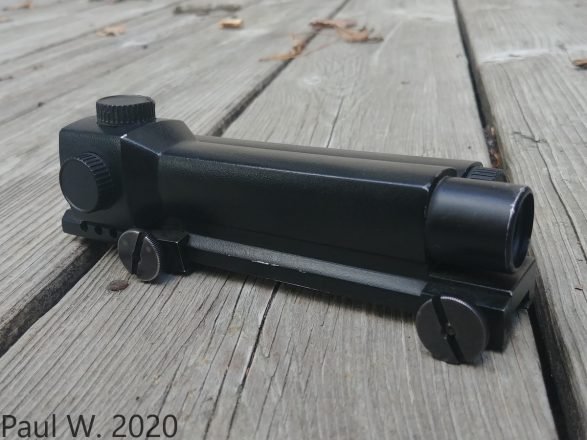
The integrated mount allows the optic to sit lower on the firearm when mounted, and is more durable than the multiple piece mount. It is still a Weaver rail mount, but that hasn’t stopped me from putting it on an AR.

Battery choice is still the the same as the G2, and with CR2s offering battery life in the 40-50 hour range.
Looking through the optic is nearly identical to the G2, with a small 14mm window size, and similar dot profile. This really is just a product improved version of the Electronic, making the optic more streamlined and simpler. The Mark III holds a special place in my heart, as it was my first Aimpoint.
The Mark III ended production in 1986, and the next generation of Aimpoints began.
Lasting Effect of the Aimpoint Electronic
The Electronic series was the stepping stone that got Aimpoint into the market, and popular in the market. The three first models sold fairly well, and allowed Aimpoint to begin working on their next generation of optics. You’ll still occasionally see the old Electronics pop up on hunting guns on GunBroker, or sold by themselves on eBay. While not a commonly seen optic, these have influenced the last 40 years of red dot sights. If it is an optic that has an LED emitter, you know where it began.
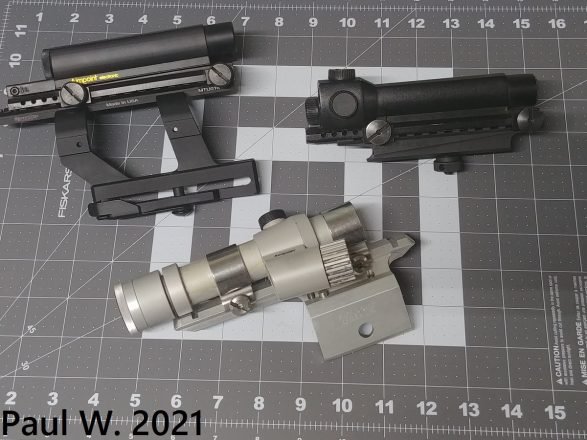
The legacy of the Electronic lives on in the series that replaced it, the Aimpoint 1000 line. While not the topic of this article, the 1000 was the bridge from “old school Aimpoint” to “new school”. Maybe we’ll see the 1000 in a later article!
Thanks to Meatpukk for his gift of the Mark III a number of years ago.
Links to Other Aimpoint History Articles
- Aimpoint: An Introduction
- The Aimpoint 1000 – An Incremental Step Forward
- The Aimpoint 2000 – Aimpoint Goes To War





Hi Paul,
Really great article, I learned a lot about the MKiii I just picked from it. Was wondering if you might know anything more about the magnifiers for the MKiiis, mine has a 1.5x-4x variable zoom screw on attachment but I can’t find any details about it online and haven’t heard anything back from trying to contact aimpoint directly. Hope you might be able to enlighten me!
Hello there!
So, I actually had a magnifier, which I show in the article following this on about the Aimpoint 1000. I had a fixed 3X Aimpoint thread on magnifier, so not a variable one like you had. Truth be told, I’ve never seen the variable magnifier. Is it an OEM offering, or possibly aftermarket?
My email is Paul@whaleystrategic.com, feel free to email photos if you’d like to. Even if I don’t have specific answers for you, I’d be happy to assist with digging for more info. As I’ve found out, contacting Aimpoint often doesn’t prove to be super helpful, as their knowledge of all of the older optics is limited 4 decades on.
Thanks for commenting!
Paul
Thanks a ton for all the info.
I just harvested a Mark III complete with the mount from my Dad’s safe.
Any recommendations on the best place to sell it?
Thank you.
Allen,
Sorry for the extremely late reply, didn’t see the comment till now. I’d recommend eBay, or a similar site.
Paul
I have an Aimpoint 1000 in sliver with an Aimpoint clamp on mount. It’s on a S&W 629-2 classic Hunter with unfluted cylinder and full barrel lug factory hogue grips.its been on this big N frame 44mag since the mid 1980s. I have never experienced one minute of trouble out of it even after firing hundreds of heavenly loaded hand loads. Here it is September 2022 and I have never taken the adjustment caps off since I signed it in back in the mid 90s. It still operates flawlessly.
I have an Aimpoint Electronic that appears to be between the first and second generations. I’m just basing that on the images you included with the article, however. This Aimpoint came from Sweden on a Swedish hunting rifle.
Camp Metcalf,
Sorry for my late reply! I don’t always see the messages quickly. I’ll address both questions here:
For battery selection, I would recommend the CR2, however a range of batteries can be used. Aimpoint only has the RM1N listed, but a lot of “stackable” batteries can work, as long as they provide enough energy to the optic. Think of it kind of like an engine that can run on various types of fuel. The CR2 is readily available, and seems to provide the best battery life and output for the optic.
When I referred to a “spacer”, both of my optics came with a metal “faux battery” that acts as a shim for the battery compartment for the optics. This is something that is used in conjunction with batteries that are too short to make full contact inside of the optic. I can take a photo here in the near future to add here, or would be happy to post pictures in our discord server, link available here: https://discord.gg/TnzkfqT
I’m happy to answer any questions either here or there, but am more easily reachable on discord!
Paul
Just got my first aimpoint as well today too. It’s a mk3. I’d love to know what all batteries are useable for the optic. I noticed you said a spacer not sure what that means.
Very cool article and nice to know. I use a lot of aimpoint optics and it is interesting to know how they started